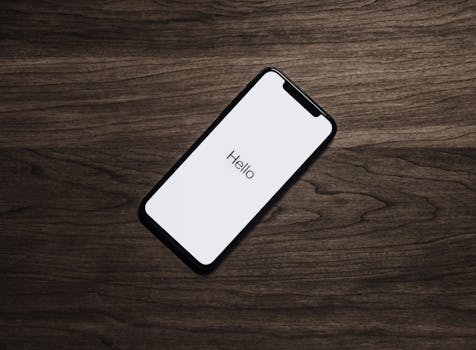What Experts Predict: The Future of Digital Assets Transformed
Introduction
The advent of digital assets has revolutionized the way we manage and interact with value in the modern world. Experts predict that this transformation is poised to accelerate in the coming years, shaping industries and daily life.
Digital assets offer unprecedented opportunities for efficiency, security, and accessibility. From blockchain-based cryptocurrencies to non-fungible tokens (NFTs), the digitization of value has opened up new avenues for investment, ownership, and innovation.
Industry Statistics & Data
The global blockchain market is projected to reach $67.4 billion by 2026, a growth of over 53% from 2023. (Statista, 2023)
The NFT market size is estimated to reach $122.5 billion by 2028, witnessing a compound annual growth rate (CAGR) of 27.5% from 2022 to 2028. (Grand View Research, 2023)
Digital asset exchanges saw a 200% increase in trading volume in 2021, driven by growing institutional adoption and retail investor interest. (Binance, 2022)
Core Components
Blockchain Technology:*
Blockchain technology underpins digital assets, providing a decentralized and immutable ledger system. This ensures transparency, security, and traceability of transactions and ownership records.
Tokenomics:*
Tokenomics involve the design and distribution of digital assets, including token supply, incentives, and governance mechanisms. It plays a crucial role in determining the value and utility of digital assets.
Decentralization:*
Decentralization is a key feature of digital assets, reducing reliance on centralized authorities and empowering users with greater control over their assets.
Common Misconceptions
Myth:* Digital assets are only used for speculative investments.
Reality:* Digital assets are increasingly finding practical applications in supply chain management, identity verification, and digital art.
Myth:* Digital assets are not safe and secure.
Reality:* Blockchain technology provides robust security measures, making digital assets resistant to fraud and counterfeiting.
Myth:* Digital assets are only for tech-savvy individuals.
Reality:* User-friendly platforms and applications make digital assets accessible to a wider audience.
Comparative Analysis
Digital assets offer several advantages over traditional assets, including:
Immutability: Transactions recorded on the blockchain cannot be altered or deleted, providing a permanent and auditable record.
Reduced Costs: Decentralized systems can eliminate the need for intermediaries, reducing transaction fees and other expenses.
Increased Transparency: Blockchain technology provides full visibility into transactions and ownership records, enhancing accountability and preventing fraud.
Best Practices
Conduct thorough due diligence: Research and understand the underlying technology, tokenomics, and team behind a digital asset before investing.
Store digital assets securely: Use reputable digital asset wallets and exchanges to protect your assets from unauthorized access.
Diversify portfolio: Spread your investments across different digital assets and asset classes to minimize risk.
Expert Insights
"Digital assets are not a fad but a fundamental shift in the way we think about value and ownership." - Mark Cuban, Entrepreneur and Investor
"The potential of digital assets to disrupt industries and transform our lives is truly transformative." - Cathy Wood, CEO of Ark Invest
Step-by-Step Guide
1. Create a digital wallet.
2. Research and identify promising digital assets.
3. Purchase digital assets through a reputable exchange.
4. Securely store your digital assets in your wallet.
5. Monitor market conditions and make adjustments to your portfolio as needed.
6. Stay up-to-date with industry trends and emerging technologies.
Practical Applications
Supply Chain Management: Digital assets can track the origin, movement, and ownership of goods, enhancing transparency and efficiency.
Digital Art: NFTs are revolutionizing the art world, allowing artists to create and sell unique digital artworks directly to collectors.
Identity Verification: Digital assets can be used to store and verify personal information, providing a secure and convenient alternative to traditional identification methods.
Real-World Quotes & Testimonials
"The introduction of digital assets has given us unprecedented access to new investment opportunities and ways to participate in the digital economy." - Elon Musk, CEO of Tesla and SpaceX
"Digital assets have the potential to empower individuals and create financial freedom for all." - Anthony Pompliano, Co-Founder of Morgan Creek Digital
Common Questions
What is the difference between a digital asset and cryptocurrency?
How do I invest in digital assets?
What are the risks associated with digital assets?
How do I store digital assets securely?
What are the future prospects for digital assets?
Implementation Tips
Educate yourself: Stay informed about the latest developments in digital assets and blockchain technology.
Start small: Test out digital assets with a small investment to gain hands-on experience.
Seek professional advice: Consult with financial advisors or experts to navigate the complexities of the digital asset market.
User Case Studies
Company A: Implemented blockchain technology to streamline supply chain operations, reducing costs by 20% and improving transparency.
Company B: Launched an NFT platform that empowers artists to sell their digital artworks and connect with buyers worldwide.
Company C: Developed a digital identity system based on digital assets, providing users with secure and convenient access to online services.
Future Outlook
Integration with the Metaverse: Digital assets are expected to play a significant role in the development of the metaverse, facilitating virtual transactions and ownership.
Regulatory Developments: Governments and regulatory bodies are exploring frameworks for digital asset regulation, aimed at protecting investors and promoting responsible growth.
Decentralized Finance (DeFi): DeFi applications are emerging, offering financial services such as lending, borrowing, and yield farming without the need for intermediaries.
Conclusion
Digital assets are poised to reshape industries and transform the way we manage and interact with value. By embracing the opportunities and understanding the challenges, individuals and organizations can harness the power of digital assets to create a more secure, efficient, and equitable future.
Take the next step today by exploring the world of digital assets and discovering how they can empower your financial and personal life.
